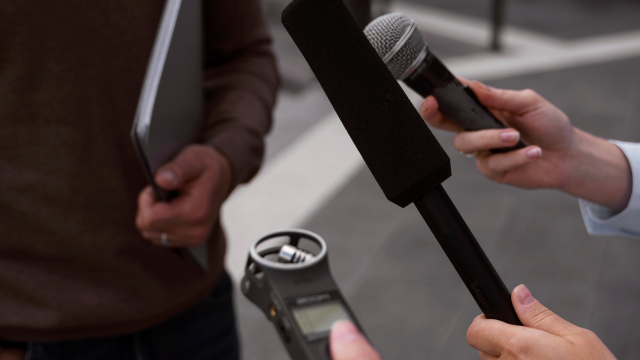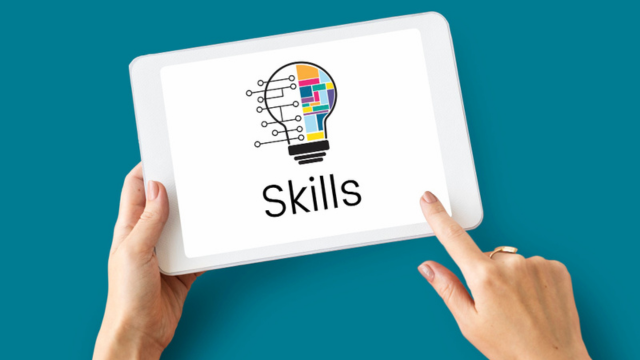
Public Speaking Is My Weakness
Dec 2, 2024 | Public Speaking
Public speaking is a skill that strikes fear into the hearts of many. Whether you’re a beginner just starting out or an advanced speaker looking to improve, the thought of standing in front of a crowd and delivering a speech can be daunting. But fear not, because in this article, we will explore the art of public speaking, share some tips and techniques, and help you overcome the fear that often accompanies it.

Understanding the Fear
Let’s start by addressing the elephant in the room: fear. The fear of public speaking, also known as glossophobia, is incredibly common. In fact, studies have shown that it ranks higher than the fear of death for many people. But why is this the case? What is it about speaking in public that makes us so anxious?
The fear of public speaking often stems from a fear of judgment. When we stand in front of an audience, we become vulnerable to criticism and evaluation. We worry that we will forget our lines, stumble over our words, or make a fool of ourselves in front of others. This fear can be paralyzing, and it can hold us back from achieving our personal and professional goals.
Action Item
Identify specific areas for improvement, such as clarity or confidence, and commit to regular practice and feedback to build your skills step by step.
Beginner's Guide to Public Speaking
If you’re just starting out on your public speaking journey, the first step is to acknowledge your fear and understand that it’s entirely normal. Even the most accomplished speakers had to start somewhere. Here are some tips to help beginners get started:
- Choose Your Topic Wisely: Select a topic that you are passionate about and familiar with. When you speak about something you care deeply about, it will be easier to engage your audience.
- Practice, Practice, Practice: Rehearse your speech multiple times. Practice in front of a mirror, record yourself, or rehearse in front of a trusted friend or family member. The more you practice, the more confident you will become.
- Start Small: If the thought of speaking in front of a large audience terrifies you, start with smaller, more intimate settings. This could be a group of friends, a team meeting at work, or a local club.
- Visual Aids: Utilize visual aids like slides or props to enhance your presentation. Visual aids can help you stay on track and provide a visual reference for your audience.

- Breathing Exercises: Practice deep breathing exercises to calm your nerves. Deep breaths can help reduce anxiety and improve your focus.
- Engage with Your Audience: Make eye contact, smile, and interact with your audience. Engaging with your audience can create a connection and make you feel less isolated on stage.
- Accept Mistakes: Understand that mistakes are a part of public speaking. Even experienced speakers make errors. Don't dwell on them; instead, keep moving forward.
- Seek Feedback: After your speech, ask for feedback from friends, colleagues, or mentors. Constructive feedback can help you identify areas for improvement.
Advanced Tips for Seasoned Speakers

For those who have some experience with public speaking but are looking to take their skills to the next level, here are some advanced tips:
- Work on Your Delivery: Focus on your tone, pace, and body language. A well-delivered speech can captivate your audience and convey your message more effectively.
- Master the Art of Storytelling: Stories are a powerful tool in public speaking. Craft compelling stories that connect with your audience on an emotional level.
- Practice Impromptu Speaking: Challenge yourself with impromptu speaking exercises. This will improve your ability to think on your feet and handle unexpected questions or situations.
- Audience Analysis: Take the time to understand your audience's demographics and interests. Tailor your speech to resonate with them.
Pro Tip
Turn public speaking into a strength by starting small, seeking feedback, and focusing on gradual improvement with consistent practice.
- Use Rhetorical Devices: Explore rhetorical devices such as metaphors, analogies, and alliteration to add depth and impact to your speech.
- Overcome Stage Fright: If stage fright still lingers, consider seeking the help of a professional coach or therapist. They can provide strategies to overcome anxiety.
- Expand Your Repertoire: Don't stick to a single style of speaking. Experiment with different formats, from TED-style talks to panel discussions and workshops.
- Stay Informed: Continuously update your knowledge on your chosen topics. Staying informed and up-to-date will enhance your credibility as a speaker.
The Journey of Improvement

Whether you’re a beginner or an advanced speaker, it’s important to recognize that public speaking is a journey of continuous improvement. No one becomes a master overnight. Embrace the process and be patient with yourself. Each speech you deliver, whether it’s in front of a small group or a large audience, is an opportunity to grow and refine your skills.
One of the most powerful ways to improve your public speaking is through feedback. Seek out constructive criticism from trusted sources and use it to refine your technique. Remember that feedback is not a reflection of your worth as a person but rather a tool for improvement.
Action Item
Start by practicing in low-pressure settings, like with friends or in small groups, to build confidence and gradually improve your skills.
The Power of Confidence
Confidence is a key ingredient in successful public speaking. It’s what allows you to stand on that stage with authority and connect with your audience. Confidence is not something that magically appears overnight, but it can be cultivated over time. Here are some tips for building your confidence as a speaker:
- Visualize Success: Before your speech, take a few moments to visualize yourself speaking confidently and engaging your audience. Visualization can help reduce anxiety and boost confidence.
- Positive Self-Talk: Replace negative thoughts with positive affirmations. Remind yourself that you are prepared and capable of delivering a great speech.
- Body Language: Pay attention to your body language. Standing tall with good posture can make you feel more confident and appear more authoritative to your audience.
- Focus on Your Message: Shift your focus away from yourself and onto your message. Remember that you are speaking to share valuable information or insights with your audience.

- Practice, Practice, Practice: The more you practice, the more confident you will become. Rehearse your speech until you know it inside and out.
- Start Small: If you're still building confidence, start with smaller speaking engagements and gradually work your way up to larger audiences.
- Learn from Others: Study successful speakers and learn from their techniques. You can gain valuable insights by observing how experienced speakers handle themselves on stage.
Conclusion

Public speaking may be perceived as a weakness by many, but it’s a skill that can be developed and improved over time. Whether you’re a beginner taking your first steps or an advanced speaker seeking to refine your technique, the key is to embrace the journey of growth and learning.
Remember that fear is a natural part of the process, but it can be overcome with practice and determination. Use the tips and techniques outlined in this article to build your skills, boost your confidence, and ultimately become a more effective and accomplished public speaker.


















































Recent Comments